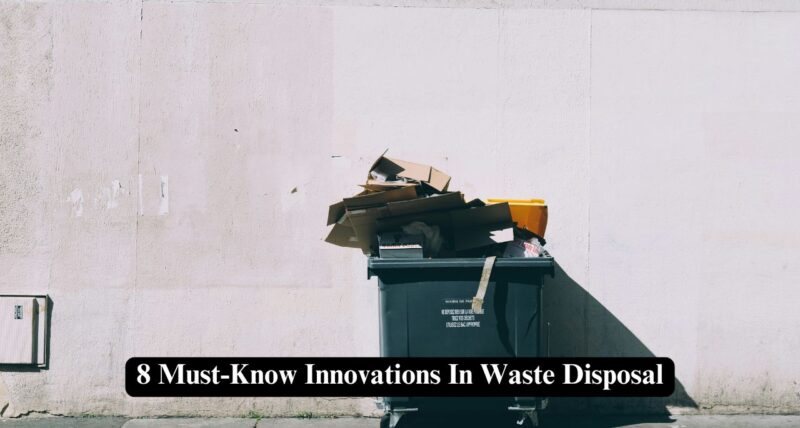To reduce waste’s detrimental effects on the environment and public health, innovations in waste disposal are necessary. Effective waste management lowers greenhouse gas emissions, avoids pollution, and conserves resources. It also produces renewable energy, enhances public health, boosts the economy, and encourages sustainability. This blog post will briefly explore eight innovations in waste disposal.
1. Smart Waste Bins
Smart waste bins are cutting-edge trash management tools that minimize garbage from landfills by utilizing sensors, networking capabilities, and data analytics. They improve the efficiency, convenience, and sustainability of garbage collection and recycling procedures.
2. Waste-To-Energy Technology
Waste-to-energy (WtE) is one of the significant innovations in waste disposal. It generates power from non-recyclable waste by using landfills. Digesters convert garbage into biogas, which is then used locally as energy. Waste is also transformed into fertilizers, chemicals, and oils through thermal power conversion and microturbines.
3. E-Waste Kiosks
These are used globally for discarding technology-related garbage. Repurposing or fixing these items can prevent leaks into the ground and water. Users may simply and safely get rid of old devices using e-waste recycling kiosks. They can even give money in return for well-maintained gadgets.
4. AI Recycling Robots
AI recycling robots increase productivity and decrease human labor by automating sorting procedures at recycling plants using sensors and grippers. These robots are error-free and capable of distinguishing between a variety of raw materials. AI-powered recycling robots can significantly enhance waste processing by working longer hours or being available around the clock.
5. Pneumatic Waste Pipes
These automated waste-collecting systems lower garbage collection expenses and their negative effects on the environment. These systems move garbage through high-pressure subterranean pipes, sorting it into several types for landfill disposal, recycling, and composting.
6. Recycling Apps
Recycling applications assist people and companies in effectively sorting recyclables and non-recyclables. These applications include details on recycling rates, facility locations, and extensive lists of recyclable products. These applications encourage better recycling practices. RecycleNation and iRecycle are well-known examples.
7. Solar-Powered Trash Compactors
Solar-powered trash compactors compress waste using solar energy, resulting in a massive reduction in the frequency of collection. These compactors can handle much more rubbish than non-compacting bins. Additionally, they have integrated trash level sensors that convey information about the bin’s limit. These make the collection procedure more efficient.
8. Automated Waste Sorting
Automated waste sorting reduces mistakes and inappropriate disposal by identifying waste categories using imaging devices, sensors, and software. Additionally, it maximizes natural resources, reduces landfill trash, and permits repurposing of recyclable items. Automated waste segregation machines offer numerous environmental benefits due to their speed, efficiency, and reduced operation time.
These innovations in waste disposal facilitate and streamline smart waste management. They save resources and lower greenhouse gas emissions. They protect natural habitats and ecosystems by minimizing the negative effects of environmental pollution. By slowing down climate change, they aid in the creation of a sustainable future.



